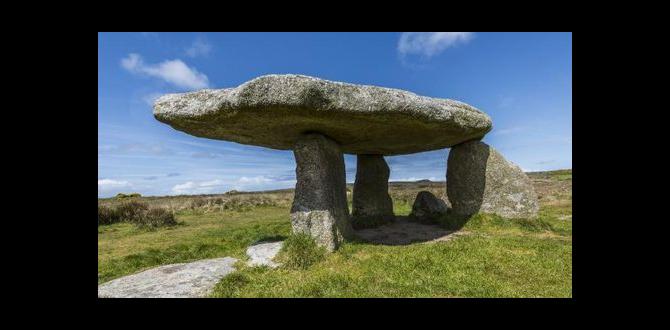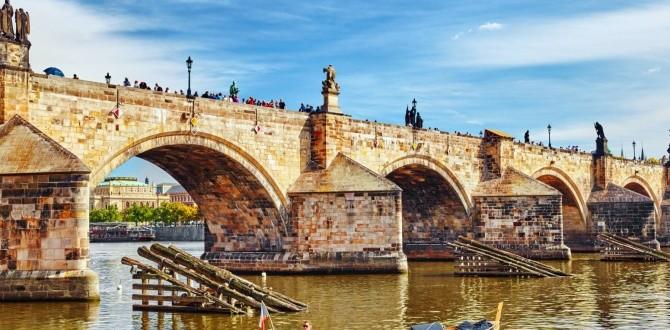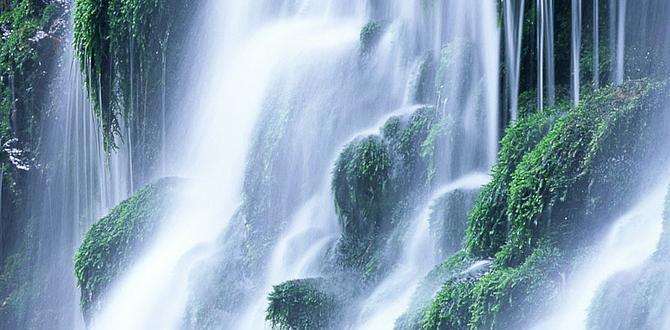Discover Agra’s secret spots beyond the Taj Mahal! This guide reveals off-the-beaten-path treasures, offering unique cultural experiences, peaceful retreats, and delicious local flavors for an unforgettable journey away from the usual crowds.
Agra, a city steeped in history, often brings to mind one iconic monument: the Taj Mahal. While this magnificent mausoleum is an absolute must-see, Agra holds many more wonders waiting to be explored. Many travelers feel they’ve “done” Agra after visiting the Taj, but this vibrant city offers a wealth of lesser-known attractions that provide a deeper, more authentic experience.
If you’re looking to escape the typical tourist trail and find those special places that make a trip truly memorable, you’re in the right spot. We’ll guide you through Agra’s best-kept secrets, ensuring your visit is rich with discovery and comfort. Get ready to uncover the soul of Agra beyond the postcards!
Unveiling Agra: Why Go Beyond the Taj?
The allure of the Taj Mahal is undeniable. It’s a symbol of love, architectural brilliance, and a UNESCO World Heritage site. However, Agra’s historical tapestry is woven with many threads, each representing a different era, culture, and story. Popular tourist routes can sometimes feel crowded, making it hard to connect with the true essence of a place. By venturing slightly off the beaten path, you can:
Experience authentic local life: See how people live, shop, and celebrate beyond the tourist zones.
Discover lesser-known historical marvels: Many structures tell compelling stories that are often overlooked.
Enjoy a more peaceful journey: Find moments of quiet reflection and personal connection with the city.
Taste genuine regional cuisine: Explore eateries frequented by locals for the most flavorful dishes.
This guide is designed to help you navigate these hidden corners, making your Agra adventure more enriching and less stressful. Think of it as your personal key to unlocking Agra’s well-guarded treasures, ensuring a comfortable and memorable experience for everyone, from solo explorers to families.
Your Agra Hidden Gems Checklist
To help you plan your exploration, here’s a handy checklist of places and experiences that go beyond the usual Agra itinerary. Think of these as essentials for a truly immersive visit.
Itmad-ud-Daulah’s Tomb (Baby Taj): Often overshadowed by its grander cousin, this exquisite tomb predates the Taj Mahal and showcases intricate marble inlay work.
Mehtab Bagh: Located on the opposite bank of the Yamuna River, this Mughal garden offers stunning sunset views of the Taj Mahal without the crowds.
Akbar’s Mausoleum at Sikandra: A magnificent fusion of Hindu and Islamic architectural styles, this tomb is a testament to Emperor Akbar’s liberal views.
Chini Ka Rauza: A unique tomb featuring decorative blue glazed tiles, showcasing Persian architectural influences.
Anguri Bagh (Grape Garden) at Agra Fort: A beautiful garden within the fort complex, offering a serene escape and insights into Mughal royal life.
Local Bazaar Exploration: Wander through Kinari Bazaar for crafts and wedding items, or Sadar Bazaar for local snacks and general shopping.
Kinari Bazaar: A vibrant market offering an array of traditional Indian handicrafts, textiles, and decorative items.
Sadar Bazaar: A bustling marketplace where you can find everything from delicious street food to leather goods and local crafts.
Foodie Adventures: Sample local Mughlai cuisine, street food like petha, and enjoy a traditional thali.
The Local Ferry Ride: Experience a different perspective of the city and its monuments from the Yamuna River.
Deep Dive into Agra’s Hidden Gems
Let’s explore these fascinating locations in more detail, providing you with the information you need to plan your visit with ease and confidence.
1. Itmad-ud-Daulah’s Tomb: The Jewel Box of Agra
Often called the “Baby Taj,” Itmad-ud-Daulah’s Tomb is a precursor to the Taj Mahal in its delicate craftsmanship. Built by Nur Jahan for her father, Ghiyas Beg, it’s a masterpiece of early Mughal architecture. Its detailed pietra dura (inlay work) using semi-precious stones is breathtaking. Unlike the Taj, it’s built primarily from sandstone with marble as a decorative element, offering a softer, more intimate feel.
Why it’s a hidden gem: It’s less crowded, allowing for a more reflective experience. The intricate details of the inlay work are incredibly well-preserved and easier to appreciate up close.
Traveler Tip: Visit in the late afternoon when the sun casts a golden glow on the marble. The peaceful atmosphere here is a welcome contrast to the bustling Taj.
2. Mehtab Bagh: Sunset Serenity by the Yamuna
Imagine a place offering an unobstructed, serene view of the Taj Mahal at sunset, without the throngs of people. Mehtab Bagh, a 16th-century Mughal garden complex, is precisely that. Located directly across the Yamuna River from the Taj, this charbagh-style garden (four-quartered garden) was originally designed for astronomers to admire the Taj.
Why it’s a hidden gem: It provides a unique, distant perspective of the Taj Mahal, especially magical during sunset. It’s a tranquil spot for photography and quiet contemplation.
Traveler Tip: Pack some snacks and water. While there are some amenities, bringing your own ensures maximum comfort while you enjoy the view. This is a perfect spot for a relaxed evening after a day of sightseeing.
3. Akbar’s Mausoleum at Sikandra: A Vision of Harmony
Located on the outskirts of Agra, Sikandra is the final resting place of Emperor Akbar the Great. This grand mausoleum is a beautiful example of architectural synthesis, blending Persian, Hindu, Buddhist, and Islamic styles. The tomb is set within a vast garden, and its red sandstone structure is topped with a white marble pavilion.
Why it’s a hidden gem: Its scale and unique architectural fusion are often overlooked. The peaceful grounds offer a different feel from the marble dominance of the Taj.
Traveler Tip: Allow at least 2-3 hours to explore the entire complex and appreciate the fine carvings and the surrounding gardens. The complex is quite spread out, so comfortable walking shoes are essential.
4. Chini Ka Rauza: A Splash of Persian Blue
This captivating tomb is known for its stunning blue glazed tiles and Persian architectural style. Dedicated to a Persian poet, it stands as a unique example of Indo-Persian artistic fusion. The decorative tilework is the star, creating a vibrant visual contrast against the Agra sky.
Why it’s a hidden gem: It’s one of the few monuments in Agra showcasing such extensive use of glazed tile work. Its distinctive beauty makes it remarkable.
Traveler Tip: This site is often less visited, offering a chance for uninterrupted exploration. The tile work is particularly striking when the sun is high.
5. Anguri Bagh (Grape Garden) at Agra Fort: A Royal Retreat
While most visitors focus on the main halls of Agra Fort, the Anguri Bagh offers a glimpse into the private lives of the Mughals. This beautifully laid out garden, once used for growing grapes, is a serene space within the fort complex. It’s a tranquil spot to imagine the Mughal royalty relaxing amidst the greenery.
Why it’s a hidden gem: It’s an often-missed section of Agra Fort, providing a peaceful respite and a different perspective on the fort’s design and purpose.
Traveler Tip: After exploring the Diwan-i-Aam and Diwan-i-Khas, take some time to wander through this garden. It’s a great place to sit, relax, and soak in the atmosphere.
Beyond Monuments: Experiencing Agra’s Soul
Agra isn’t just about its forts and tombs; its vibrant culture, bustling markets, and delicious food are integral to the experience.
Local Bazaars: A Sensory Delight
Stepping into an Agra bazaar is an immersion into the daily life and commerce of the city.
Kinari Bazaar: This is the place for wedding items, intricate embroidery, zari work, and decorative crafts. It’s a riot of colors and textures, perfect for finding unique souvenirs.
Sadar Bazaar: A more general market, Sadar Bazaar is known for its leather goods, delicious street food, and a wide variety of clothing and accessories.
Traveler Tip: Be prepared to bargain respectfully. It’s part of the cultural experience. Also, keep your belongings secure, as these markets are often crowded. If you are traveling with young children or need convenience, consider bringing travel-friendly diaper solutions to ensure comfort and ease, allowing you to focus on the vibrant sights and sounds.
Culinary Adventures: Tasting Agra
Agra’s culinary scene is a legacy of the Mughal era, blending rich flavors and aromatic spices.
Mughlai Cuisine: Don’t miss out on dishes like biryani, kebabs, and rich curries. Many local eateries serve authentic and delicious Mughlai food.
Petha: Agra is famous for its sweet delicacy, petha, a translucent soft candy made from ash gourd. You can find various flavors and forms of this local specialty.
Street Food: Explore local stalls for chaat, samosas, and other savory snacks.
Food to Try in Agra:
| Dish/Sweet | Description | Best Place to Try |
| Petha | Candied ash gourd, available in many flavors (plain, saffron) | Panchhi Petha, local sweet shops |
| Mughlai Biryani | Fragrant basmati rice cooked with meat and spices | Mama Bhanja, Shanti Lodge Restaurant |
| Kebabs | Tender, spiced minced meat grilled or fried | Esphahan (The Oberoi Amarvilas), various street stalls |
Local Ferry Ride: For a unique perspective, take a short ferry ride on the Yamuna River. It offers a tranquil way to view the city’s ghats and sometimes offers distant views of the Taj.
Traveler Tip: Always ensure food from street vendors is cooked fresh and hot. For comfort during longer travel days, having easily accessible toiletries and personal care items, like adult diapers for peace of mind on extended excursions or child diapers for little ones, can make a significant difference in your overall travel experience. Reliable personal supplies allow you to fully enjoy the sensory exploration of Agra.
Planning Your Agra Hidden Gems Itinerary
When planning your trip, consider how to combine these hidden gems with the main attractions for a balanced experience.
Sample 2-Day Itinerary (Focus on Hidden Gems)
Day 1: Mughal Grandeur & Serene Views
Morning: Visit Agra Fort. While exploring, make sure to discover the Anguri Bagh.
Afternoon: Visit Itmad-ud-Daulah’s Tomb (Baby Taj) and Chini Ka Rauza.
Evening: Head to Mehtab Bagh for sunset views of the Taj Mahal. Enjoy dinner at a local restaurant specializing in Mughlai cuisine.
Day 2: Imperial Legacy & Market Buzz
Morning: Travel to Sikandra to explore Akbar’s Mausoleum.
Afternoon: Immerse yourself in the local culture at Kinari Bazaar or Sadar Bazaar. Enjoy some authentic Agra street food like petha.
Late Afternoon: Consider a short ferry ride on the Yamuna River for a different perspective.
Evening: Relax or revisit a favorite spot.
Tips for a Comfortable Journey:
Hydration and Snacks: Carry water bottles and light snacks, especially when exploring less-developed areas.
Comfortable Attire: Dress in light, breathable fabrics. Comfortable walking shoes are a must.
Sun Protection: A hat, sunglasses, and sunscreen are essential for daytime explorations.
Personal Care: For any traveler, especially those with specific needs, ensuring access to essential personal care items is key. If you require adult diapers for comfort and security during long days of exploration, or if you’re traveling with young children needing child diapers, carrying an adequate supply will significantly enhance your trip’s peace of mind. Brands offering discreet and highly absorbent options can be a lifesaver. You can find more information on travel-friendly personal care solutions at resources like the National Association for Continence.
Navigation: Offline maps or a local guide can be helpful for navigating some of the less-touristy areas.
Transportation: Auto-rickshaws, cycle-rickshaws, and pre-booked taxis are common ways to get around.
Essential Packing for Agra’s Hidden Charms
Beyond your regular travel essentials, a few specific items can enhance your experience when seeking out Agra’s hidden gems.
Must-Have Accessories:
Comfortable Walking Shoes: You’ll be doing a lot of walking, often on uneven terrain.
Lightweight Scarf or Shawl: Useful for sun protection, dust, and for modest dress when visiting religious sites.
Reusable Water Bottle: Stay hydrated and reduce plastic waste.
Small Backpack or Day Bag: To comfortably carry your essentials.
Portable Charger: Keep your devices powered for photos and navigation.
Hand Sanitizer: Crucial when sampling street food or after visiting busy markets.
Insect Repellent: Especially useful for evenings or near water bodies.
For families, packing child diapers that are lightweight and easy to change on the go is critical. Similarly, for adults who might need adult diapers, choosing absorbent, discreet, and comfortable options is paramount for a stress-free journey. Brands often provide discreet packaging and various sizes to cater to different needs, ensuring you can be active and explore without worry.
A Note on Accessibility
While many historical sites in India are undergoing improvements, accessibility can be a challenge. Older monuments may have uneven paths, stairs, and no ramp facilities.
Agra Fort: Parts of the fort are accessible, but many areas involve stairs.
Itmad-ud-Daulah’s Tomb & Mehtab Bagh: Generally more accessible with paved paths.
* Sikandra: The grounds are large and relatively flat, but the tomb itself has steps.
Traveler Tip: If mobility is a concern, consider hiring a local guide who can advise on the most accessible routes within each site. Research specific accessibility information beforehand when possible. Organizations like the India Tourism Ministry often provide facility details.
Conclusion
Agra is a city brimming with stories, and the greatest tales often lie just beyond the most photographed landmarks. From the delicate artistry of Itmad-ud-Daulah’s Tomb to the tranquil waterside views at Mehtab Bagh, and the vibrant pulse of its local bazaars, these hidden gems offer a richer, more intimate connection with this historic city. By adding these treasures to your itinerary, you’re not just sightseeing; you’re embarking on a journey of discovery that appeals to the senses and the soul.
Remember, travel is about the experience. Ensuring your comfort and peace of mind, whether through packing the right essentials or having reliable personal care solutions like adult or child diapers when needed, allows you to be fully present. This guide is your first step to unlocking a side of Agra that many visitors miss. So, pack your curiosity, comfortable shoes, and an open heart. Agra’s essential discoveries are waiting for you.
Frequently Asked Questions
Q1: How much time should I allocate for exploring Agra’s hidden gems?
A1: To truly enjoy Agra’s hidden gems without rushing, it’s recommended to dedicate at least 2-3 days. This allows time for visiting lesser-known monuments, exploring bustling local markets, and savoring the diverse culinary offerings.
Q2: What is the best time of year to visit Agra?
A2: The best time to visit Agra is during the winter months, from October to March. The weather is pleasant, with cool mornings and evenings, making outdoor exploration comfortable. Summers (April to June) are extremely hot.
Q3: Are there affordable accommodation options near these hidden gems?
A3: Yes, Agra offers a wide range of accommodation, from luxury hotels to budget guesthouses and homestays. Many affordable options are located in areas slightly away from the main tourist hubs, offering a more local experience.
Q4: What local transportation is best for reaching hidden spots?
A4: Auto-rickshaws and cycle-rickshaws are common and affordable for getting around Agra, including to some of the less-visited sites. For longer distances or more comfort, you can hire a taxi for the day. Negotiate fares beforehand.
Q5: Is it safe to explore local bazaars in Agra?
A5: Local bazaars in Agra are generally safe, but like any bustling market, it’s important to be aware of your surroundings. Keep your belongings secure, avoid displaying valuables, and be mindful of crowds. Visiting during daylight hours is advisable for first-time visitors.
Q6: What unique souvenirs can I find in Agra’s hidden markets?
A6: Beyond the famous marble inlay work, you can find embroidered textiles, leather goods, wooden crafts, intricate metalwork, and of course, the famous Agra petha in various local markets like Kinari and Sadar Bazaar.
Q7: What are some essential personal care items to pack for comfort during exploration?
A7: While comfortable clothing and shoes are key, packing essential personal care items like travel-sized toiletries, hand sanitizer, and specific needs such as discreet adult diapers or reliable child diapers can significantly enhance comfort and peace of mind, allowing you to fully enjoy your explorations.





